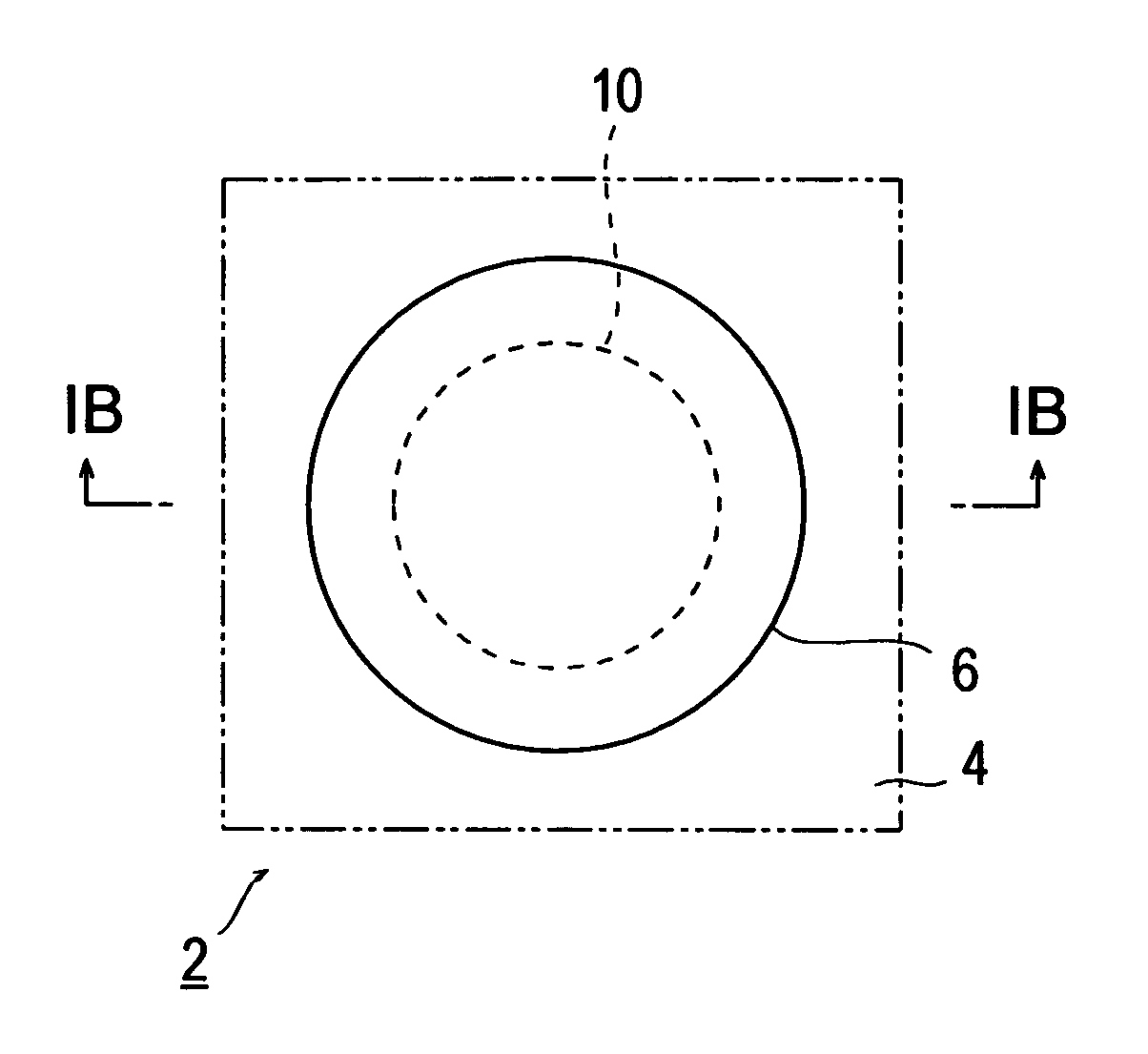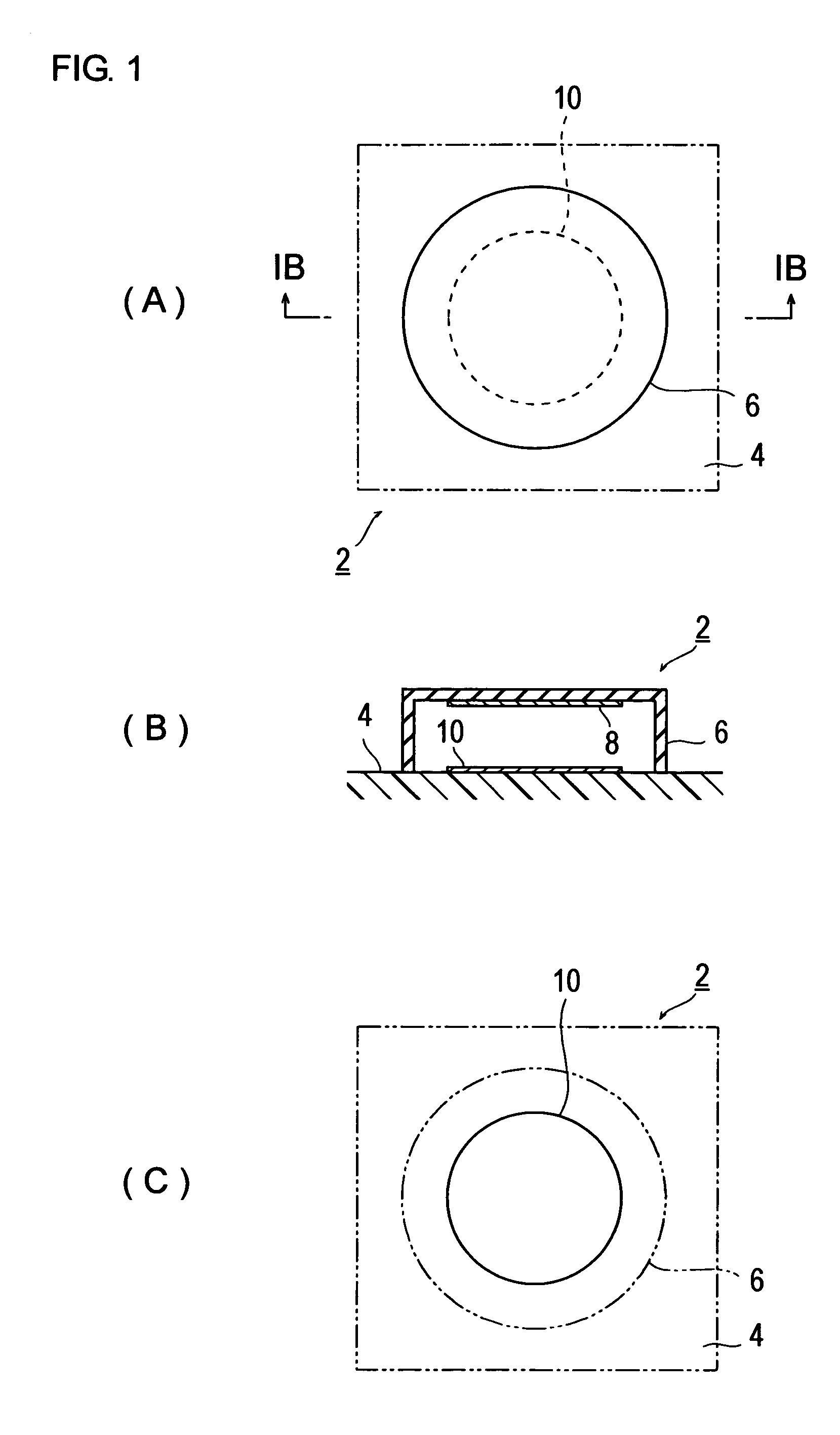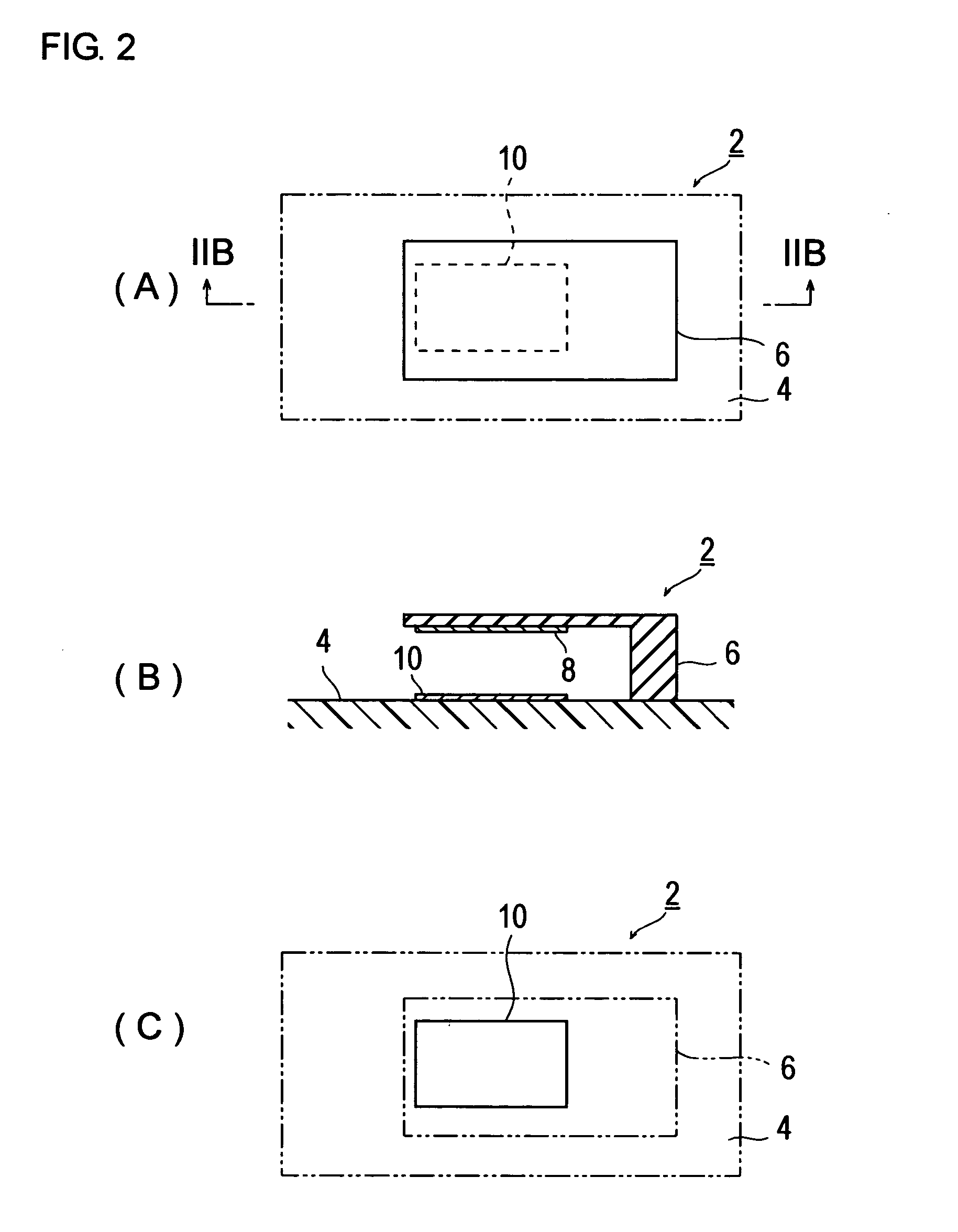Force sensor, force detection system and force detection program
a technology of force sensor and program, applied in the field of force sensor, can solve the problems of loss of reliability of detection device, difficult to distinguish output drift, and inability to determine zero point, etc., and achieve the effect of high reliability and accurate sensor outpu
- Summary
- Abstract
- Description
- Claims
- Application Information
AI Technical Summary
Benefits of technology
Problems solved by technology
Method used
Image
Examples
first embodiment
[0065] The first embodiment of the present invention will be described below referring to FIG. 6. FIG. 6 shows a force sensor, wherein (A) is its plan view, (B) is a cross section along the VIB-VIB line of (A), and (C) is a plan view of the force sensor showing it without the displacement unit.
[0066] This force sensor 20 is equipped with a displacement part 24, which is mounted on a substrate 22, for generating a displacement when an external force is applied, the displacement part 24 is equipped with a cylindrical support part 26, which is flexible in the vertical direction in this embodiment, an tabular input part 28 integrally formed with the support part 26, and a columnar protrusion 30 in the inner center of the input part 28. The displacement part 24 is made of an elastic material such as rubber or metallic so that it can deform when an external force is applied and restore its original form when the force is removed.
[0067] An annular shaped detection electrode 32 is mounted...
second embodiment
[0072] The second embodiment of the present invention will be described below referring to FIG. 10. FIG. 10 is a block diagram showing the force detection system using a force sensor.
[0073] This force detection system 46 is equipped with the aforementioned force sensor 20 and is constituted in such a way that the sensor output C1 of the sensor part 36 and the sensor output C2 of the sensor 44 of the second sensor 20 are entered into the output processing unit 48 respectively, and sensor output C1 is compensated using the sensor output C2 as reference information such as zero point compensation information and the like to generate the detection output C0 corresponding to the force f. In this case, the output processing unit 48 is equipped with capacitance / voltage (C / V) converters 50 and 52 for the outputs C1 and C2 respectively and an analog / digital (A / D) converter 54 provided on the sensor output C1 side, and a comparator 56 provided on the sensor output C2 side. The outputs of the...
third embodiment
[0077] The third embodiment of the present invention will be described below referring to FIG. 11. FIG. 11 is a flow chart of an example of the force detection program used for the output processing of the processor 58.
[0078] The force detection program reads and stores the first output C1 of the sensor unit 36 and the second output C2 of the sensor unit 44 (step S1). Since the output C2 develops level changes in response to the input f, the time information representing the periods of levels exceeding a specified level is extracted from the output C2 based on said level changes and their time relations (step S2). The output C1 is compensated with reference to said time information (step S3) in order to obtain the compensated output C1 (step S4).
[0079] Since the force sensor 20 (FIG. 6) is provided with the two sensor units 36 and 44 for a single displacement part 24, meaning that a single input is fed to the two sensor units 36 and 44, the outputs C1 and C2 are generated simultan...
PUM
| Property | Measurement | Unit |
|---|---|---|
| force | aaaaa | aaaaa |
| displacement | aaaaa | aaaaa |
| time | aaaaa | aaaaa |
Abstract
Description
Claims
Application Information
 Login to View More
Login to View More - R&D
- Intellectual Property
- Life Sciences
- Materials
- Tech Scout
- Unparalleled Data Quality
- Higher Quality Content
- 60% Fewer Hallucinations
Browse by: Latest US Patents, China's latest patents, Technical Efficacy Thesaurus, Application Domain, Technology Topic, Popular Technical Reports.
© 2025 PatSnap. All rights reserved.Legal|Privacy policy|Modern Slavery Act Transparency Statement|Sitemap|About US| Contact US: help@patsnap.com



